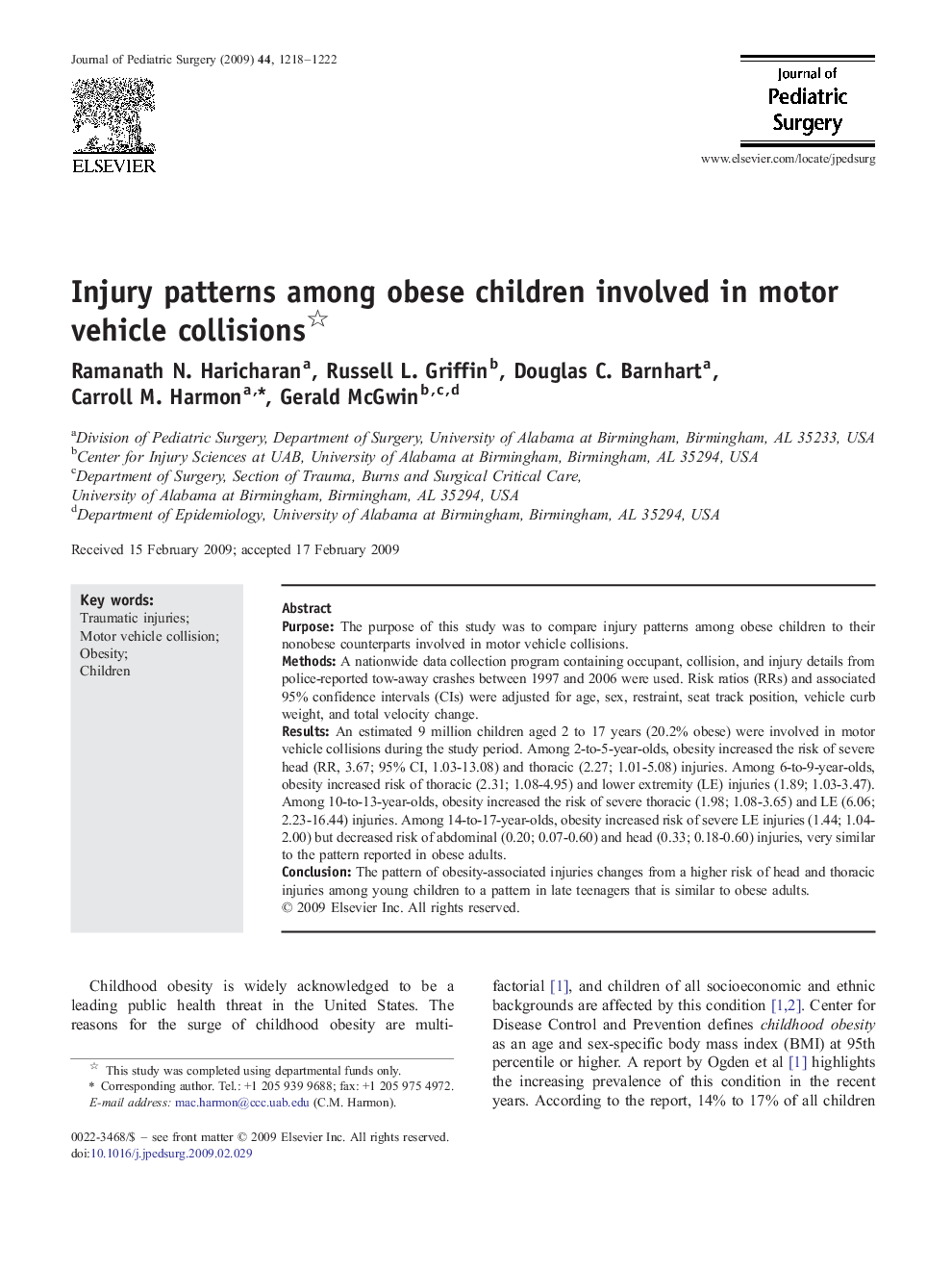| Article ID | Journal | Published Year | Pages | File Type |
|---|---|---|---|---|
| 4159492 | Journal of Pediatric Surgery | 2009 | 5 Pages |
PurposeThe purpose of this study was to compare injury patterns among obese children to their nonobese counterparts involved in motor vehicle collisions.MethodsA nationwide data collection program containing occupant, collision, and injury details from police-reported tow-away crashes between 1997 and 2006 were used. Risk ratios (RRs) and associated 95% confidence intervals (CIs) were adjusted for age, sex, restraint, seat track position, vehicle curb weight, and total velocity change.ResultsAn estimated 9 million children aged 2 to 17 years (20.2% obese) were involved in motor vehicle collisions during the study period. Among 2-to-5-year-olds, obesity increased the risk of severe head (RR, 3.67; 95% CI, 1.03-13.08) and thoracic (2.27; 1.01-5.08) injuries. Among 6-to-9-year-olds, obesity increased risk of thoracic (2.31; 1.08-4.95) and lower extremity (LE) injuries (1.89; 1.03-3.47). Among 10-to-13-year-olds, obesity increased the risk of severe thoracic (1.98; 1.08-3.65) and LE (6.06; 2.23-16.44) injuries. Among 14-to-17-year-olds, obesity increased risk of severe LE injuries (1.44; 1.04-2.00) but decreased risk of abdominal (0.20; 0.07-0.60) and head (0.33; 0.18-0.60) injuries, very similar to the pattern reported in obese adults.ConclusionThe pattern of obesity-associated injuries changes from a higher risk of head and thoracic injuries among young children to a pattern in late teenagers that is similar to obese adults.
